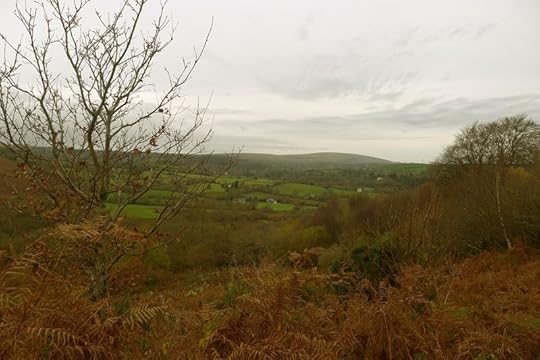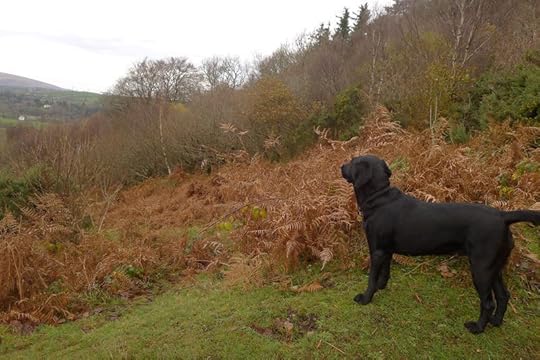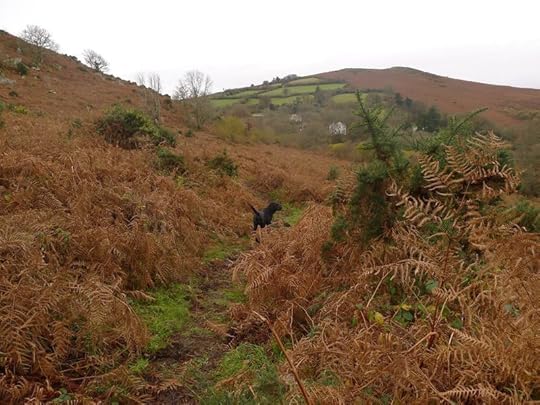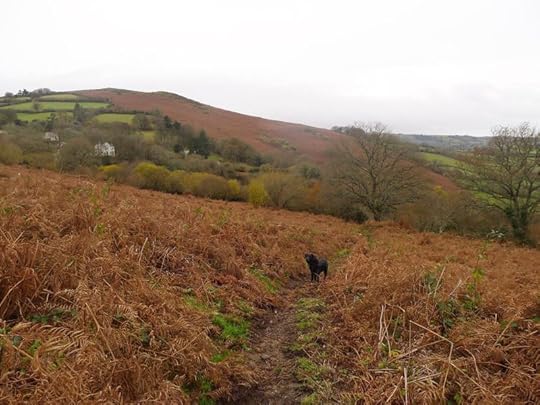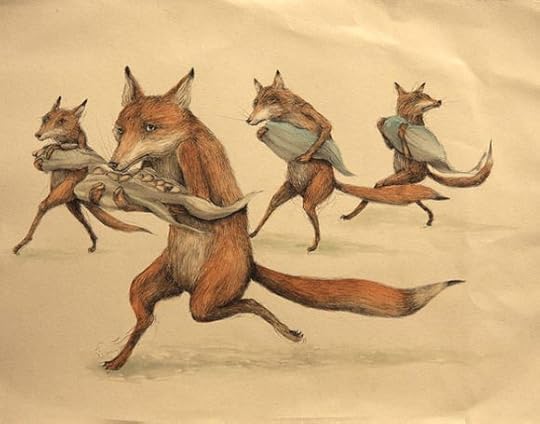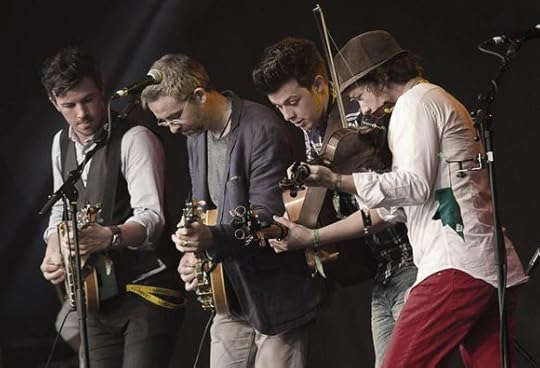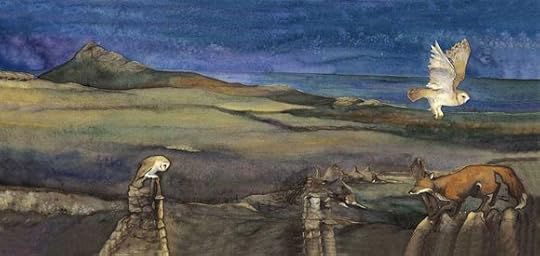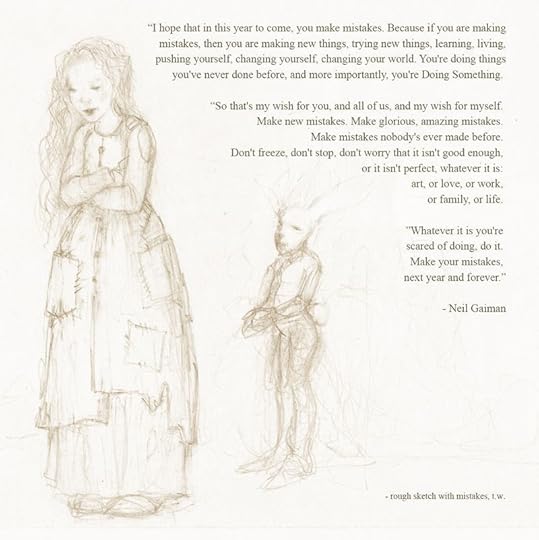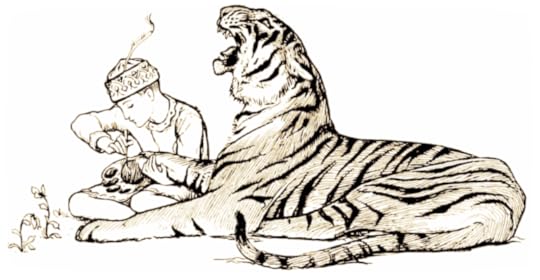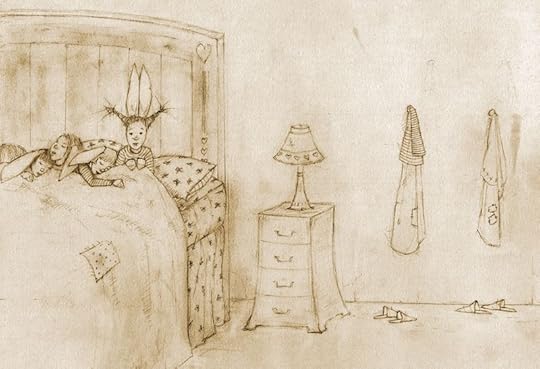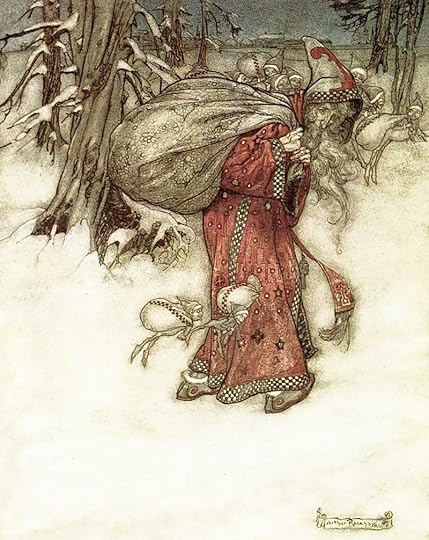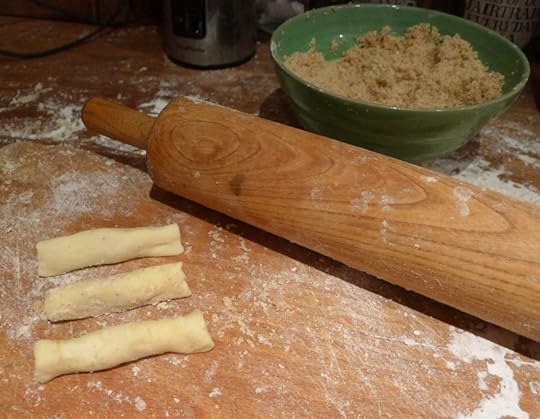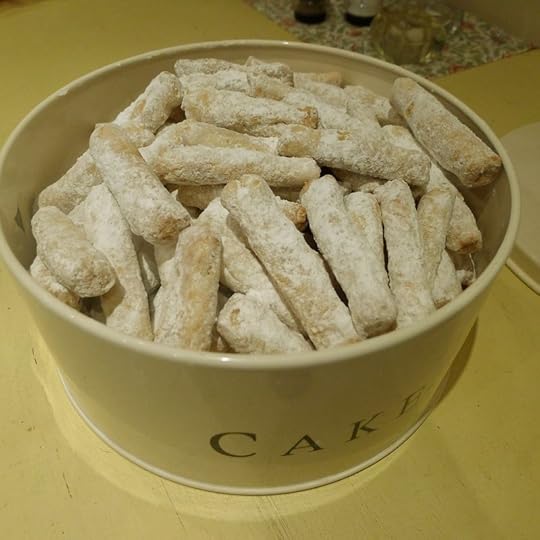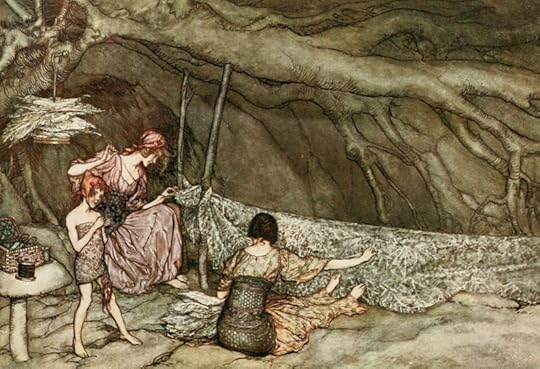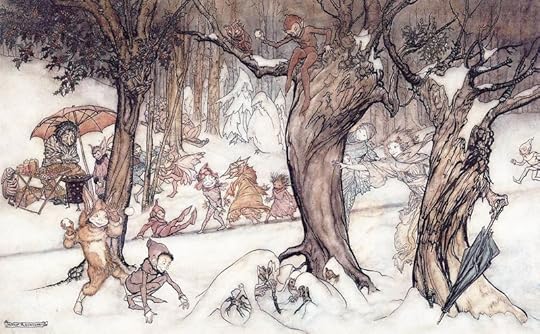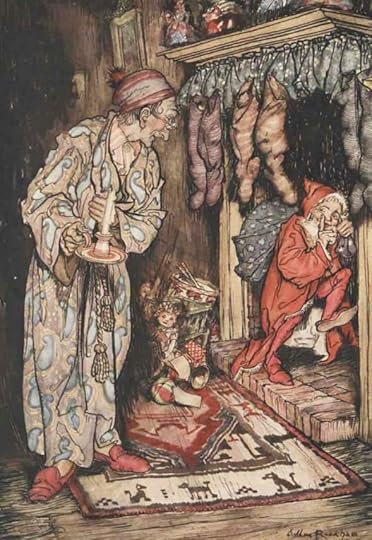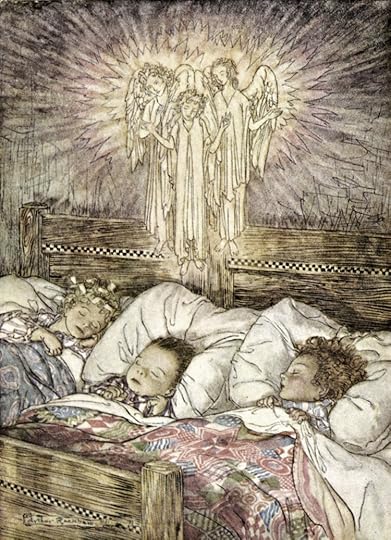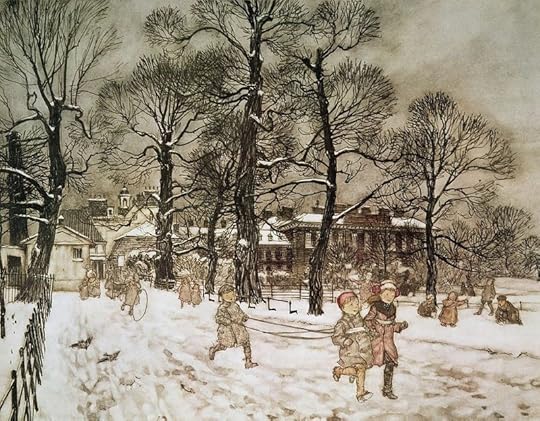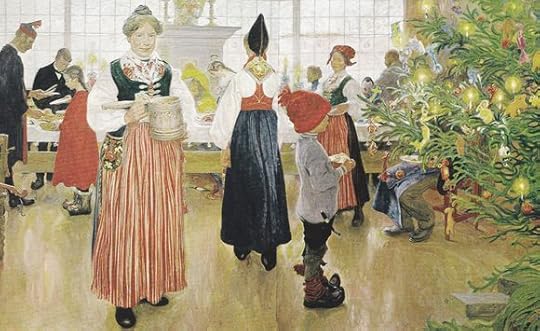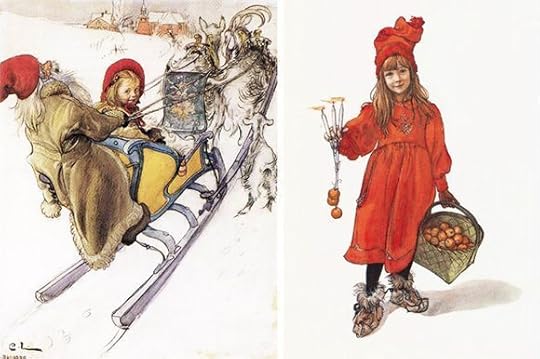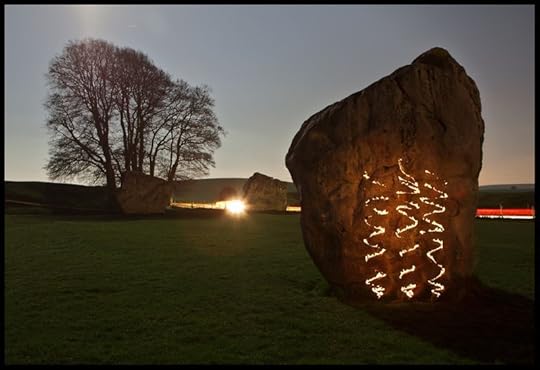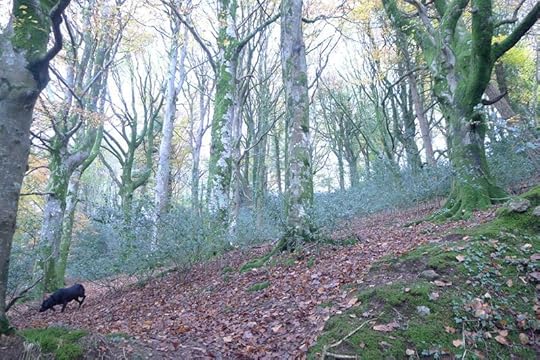Terri Windling's Blog, page 148
January 6, 2015
True work
The post I'd planned for today has turned into a lengthy one and will be posted tomorrow instead. In the meantime, this:
There is one thing in this world you must never forget to do.
Human beings come into this world to do particular work.
That work is their purpose, and each is specific to the person.
If you forget everything else and not this,
there's nothing to worry about.
If you remember everything else and forget your true work,
then you will have done nothing with your life.
- Rumi (from The Soul of Rumi, translated by Coleman Barks)
January 4, 2015
Tunes for a Monday Morning
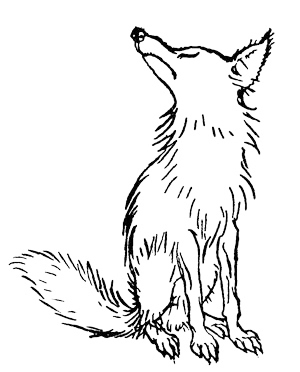 Let's kick off the new year with some kick-ass tunes from We Banjo 3, whose Irish/Old Time/Bluegrass music has been in heavy rotation in my studio lately. The group consists of two pairs of brothers from Galway, Ireland: Enda & Fergal Scahill and Martin & David Howley. (That's Fergal on fiddle, and other three on banjos, guitars, and mandolins.) They've got two fine CDs out so far: Roots of the Banjo Tree and Gather the Good. I haven't caught them live yet, but it's on my Wish List.
Let's kick off the new year with some kick-ass tunes from We Banjo 3, whose Irish/Old Time/Bluegrass music has been in heavy rotation in my studio lately. The group consists of two pairs of brothers from Galway, Ireland: Enda & Fergal Scahill and Martin & David Howley. (That's Fergal on fiddle, and other three on banjos, guitars, and mandolins.) They've got two fine CDs out so far: Roots of the Banjo Tree and Gather the Good. I haven't caught them live yet, but it's on my Wish List.
Above: "The Fox" (with a jig and a reel: "Tripping Up the Stairs" and The Clumsy Lover"), performed at the Hebridean Celtic Festival on the Isle of Lewis, Scotland (2014).
Below: "Gonna Write Me a Letter," performed An Taibhdhearc Theatre in Galway (2013).
Third, below:
"We All Need More Kindness in this World," performed at Whelan's in Dublin, Ireland (2013). And we certainly do.
Last, below:
"Prettiest Little Girl in the County," filmed at the Spiegeltent multi-genre music festival in Wexford, Ireland last summer.
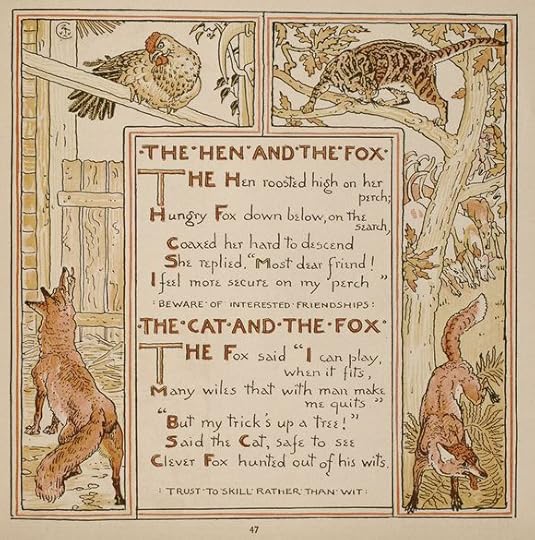
The foxy art above is by Ericilcane, Arthur Rackham, Jackie Morris, and Walter Crane.
January 1, 2015
New Year's Day
I've been thinking of Neil's wise words today, for among the things I'd like to leave behind as I cross the threshold from the old year to the new are self-judgement and perfectionism of the sort that lead to procrastination and risk-aversion ... and which are, of course, the enemies of art, originality, authenticity, and joy.
 As for my wish for all of you in 2015, please forgive me if I repeat the words I wrote here exactly one year ago, for this wish hasn't changed, and perhaps never shall:
As for my wish for all of you in 2015, please forgive me if I repeat the words I wrote here exactly one year ago, for this wish hasn't changed, and perhaps never shall:
"May the year ahead be magical, transformational, and wildly creative, but also calm and thoughtful, harmonious and balanced. May your pathway lie clear, your desk clean and ready, with the tools that you need always right near at hand. May your body and mind and spirit be strong for the things that you know in your heart must do -- and may this be the year that you finally do them. May your work go well, and your rest time too. May problems be fewer and friends be many. May old hurt soften and old grief lighten. May life, art, and love never fail to surprise you."
The fairy tale illustrations above are by Charles Robinson (1870-1937) and John Dickson Batten (1853-1917).
December 31, 2014
New Year's Eve
To all of the kind readers of Myth & Moor:
Have a good New Year's Eve, wherever you may be, and a healthy, creative, and very magical 2015. Thank you all so much for being part of my community.
Here's a little Bunny Blessing at the end of a long, tough, challenging and yet beautiful year...
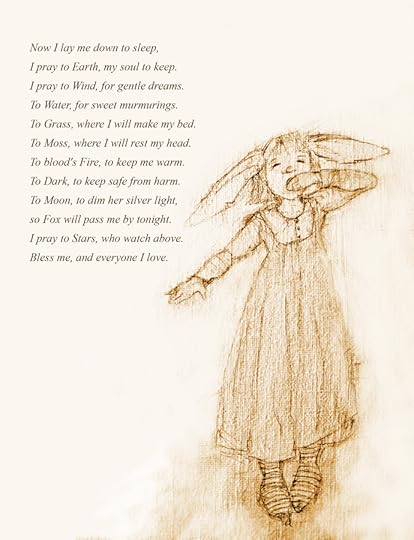
To all of the kind readers of Myth & Moor:
I wish you a healthy, creative, and very magical 2015. Thank you for being part of my community.
Here's a little Bunny Blessing for New Year's Eve....

December 29, 2014
As the old year ends...
I am popping online just briefly to thank you kindly for the holiday messages, and to send you holly, ivy, and all the magic of the Devon woods at the turning of the year.
December 23, 2014
Happy Holidays
A cold wind howls, stripping leaves off of the trees, and the pathways through the hills are laced with frost. It's time to admit that winter is truly here, and it's here to stay. But Howard keeps the old Rayburn stove in the kitchen well fed, so our wind-battered little house at the edge of the village is cozy and warm. Our Solstice decorations are up, and tonight I'll make a second batch of kiffles, the Christmas cookies passed on through generations of women in my mother's Pennsylvania Dutch family. My personal tradition is to talk to those women as I roll out the kiffle dough and cut, fill, roll, and shape each cookie: to my mother, grandmother, and old great-aunts, all of whom have passed on now...and further back, to the women in the family line that I never knew.
Kiffles are a labor-intensive process (as so many of those fine old recipes were), so I have plenty of time to tell the Grandmothers news and stories of the year gone by. This annual ritual centers me in time, place, lineage, and history; it keeps my world turning through the seasons, as all storytelling is said to do. Indeed, in some traditions there are stories that can only be told in the wintertime.
Here in Devon, there are certain "piskie" tales told only in the winter months -- after the harvest is safely gathered in and the faery rites of Samhaine have passed. In past centuries, throughout the countryside, families and neighbors gathered around the hearthfire during the long, dark hours of the winter season, 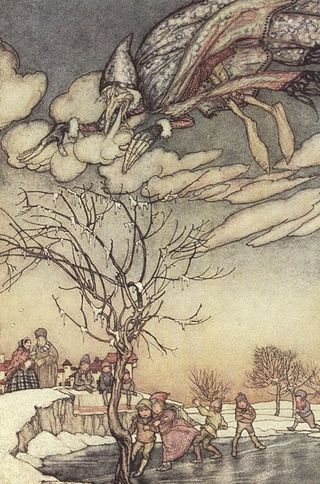 gossiping and telling stories as they labored by candle, lamp, and firelight. The "women's work" of carding, spinning, and sewing was once so entwined with storytelling that Old Mother Goose was commonly pictured by the hearth, distaff in hand. In the Celtic region of Brittany, the season for storytelling begins in November (the Black Month of Toussaint), goes on through December (the Very Black Month), and ends at Christmas. (A.S. Byatt, you may recall, drew on this tradition in her wonderful novel Possession.) In early America, some of the Puritan groups which forbade the "idle gossip" of storytelling relaxed these restraints at the dark of the year, from which comes a tradition of religious and miracle tales of a uniquely American stamp: Old World folktales transplanted to the New and given a thin Christian gloss. Among a number of the different Native American nations across the continent, winter is also considered the appropriate time for certain modes of storytelling; a time when long myth cycles are told and learned and passed through the generations. Trickster stories are among the tales believed to hasten the coming of spring. Among many tribes, Coyote stories can only be told in the dark winter months; at any other time, such tales risk offending this trickster, or drawing his capricious attention.
gossiping and telling stories as they labored by candle, lamp, and firelight. The "women's work" of carding, spinning, and sewing was once so entwined with storytelling that Old Mother Goose was commonly pictured by the hearth, distaff in hand. In the Celtic region of Brittany, the season for storytelling begins in November (the Black Month of Toussaint), goes on through December (the Very Black Month), and ends at Christmas. (A.S. Byatt, you may recall, drew on this tradition in her wonderful novel Possession.) In early America, some of the Puritan groups which forbade the "idle gossip" of storytelling relaxed these restraints at the dark of the year, from which comes a tradition of religious and miracle tales of a uniquely American stamp: Old World folktales transplanted to the New and given a thin Christian gloss. Among a number of the different Native American nations across the continent, winter is also considered the appropriate time for certain modes of storytelling; a time when long myth cycles are told and learned and passed through the generations. Trickster stories are among the tales believed to hasten the coming of spring. Among many tribes, Coyote stories can only be told in the dark winter months; at any other time, such tales risk offending this trickster, or drawing his capricious attention.
In myth cycles to be found around the globe, the death of the year in winter was echoed by the death and rebirth of the Winter King (also called the Sun King, or Year King), a consort of the Great Goddess 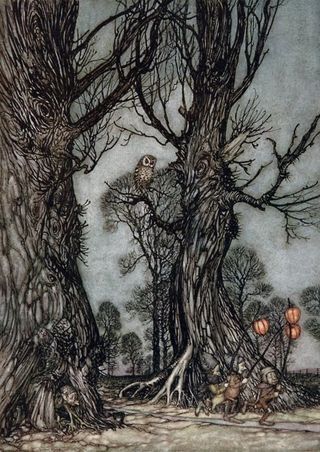 (representing the earth's fertility) in her local guise. The rebirth or resurrection of her consort (representing the sun, sky, or quickening winds) not only brought light back to the world, turning the seasons from winter to spring, but also marked a time of new beginnings, cleansing the soul of sins and sicknesses accumulated in the twelve months past. Solstice celebrations of the ancient world included the carnival revels of Roman Saturnalia (December 17-24), the Anglo-Saxon vigil of The Night of the Mother to renew the earth's fertility (December 24th), the Yule feasts of the Norse honoring the One-Eyed God and the spirits of the dead (December 25), the Persian Mithric festival called The Birthday of the Unconquered Sun (December 25th), and the more recent Christian holiday of Christmas, marking the birth of the Lord of Light (December 25th).
(representing the earth's fertility) in her local guise. The rebirth or resurrection of her consort (representing the sun, sky, or quickening winds) not only brought light back to the world, turning the seasons from winter to spring, but also marked a time of new beginnings, cleansing the soul of sins and sicknesses accumulated in the twelve months past. Solstice celebrations of the ancient world included the carnival revels of Roman Saturnalia (December 17-24), the Anglo-Saxon vigil of The Night of the Mother to renew the earth's fertility (December 24th), the Yule feasts of the Norse honoring the One-Eyed God and the spirits of the dead (December 25), the Persian Mithric festival called The Birthday of the Unconquered Sun (December 25th), and the more recent Christian holiday of Christmas, marking the birth of the Lord of Light (December 25th).
Many symbols we associate with Christmas today actually come from older ceremonies of the Solstice season. Mistletoe, holly. and ivy, for instance, were gathered in their magical potency by moonlight on Winter Solstice Eve, then used throughout the year in Celtic, Baltic and Germanic rites. The decoration of evergreen trees can be found in a number of older traditions: in rituals staged in decorated pine groves (the pinea silvea) of the Great Goddess; in the Roman custom of dedicating a pine tree to Attis on Winter Solstice Day; and in the candlelit trees of Norse Yule celebrations, honoring Frey and Freyja in their aspects of Hunter, Huntress, and Protectors of Forests. The Yule Log is a direct descendant from Norse and Anglo-Saxon rites; and caroling, pageantry, mummers plays, eating plum puddings, and exchanging gifts are all elements of Solstice celebrations handed down from the pre-Christian world. Even the story of the virgin birth of a Divine, Heroic or Sacrificial Son is not a uniquely Christian legend, but one found in cultures all around the globe -- from the myths of Asia, Africa and old Europe to Native American tales. In ancient Syria, for example, a feast on the 25th of December celebrated the Nativity of the Sun; at midnight the sun was born in the form of a child to the Virgin Queen of Heaven, an aspect of the the goddess Astarte.
Likewise, it is interesting to note that the date chosen for New Year's Day in the Western world is a relatively modern invention. When Julius Caesar revised the Roman calendar in 46 BC, he chose January 1 -- following the riotous celebrations of Saturnalia -- as the official beginning of the year. Early Christians condemned the date as pagan, tied to licentious practices, and much of Europe resisted the Julian calendar until the  Gregorian reforms in the 16th century; instead, they celebrated New Year's Day on the 25th of December, the 21st of March, or various other dates. (England first adopted January 1 as New Year's Day in 1752).
Gregorian reforms in the 16th century; instead, they celebrated New Year's Day on the 25th of December, the 21st of March, or various other dates. (England first adopted January 1 as New Year's Day in 1752).
The Chinese, Jewish, and other calendars use different dates as the start of the year, and do not, of course, count their years from the date of Christ's birth. Yet such is the power of ritual and myth that January 1st is now a potent date to us, a demarcation line drawn between the familiar past and the unknowable future. Whatever calendar you use, the transition from one year into the next is the traditional time to take stock of one's life -- to say goodbye to all that has passed and prepare for a new life ahead. The Year King is symbolically slain, the sun departs, and the natural world goes dark. Rituals, dances, pageants, and spiritual vigils are enacted in lands around the world to propitiate the sun's return and keep the great wheel of the seasons rolling.
Special foods are eaten on New Year's Day to ensure fertility, luck, wealth, and joy in the year to come: pancakes in France, rice cakes in Ceylon, new grains in India, and cake shaped as boar in Estonia and Sweden, among many others. In my family, we ate the last of those scrumptious kiffles...if they'd managed to last that long. They could not, by tradition, be made again before December of the following year, and so the last bite was alway a little sad (and especially delicious). The Christmas tree and decorations were taken down on New Year's Day, and the house was thoroughly cleaned and swept: brushing out any bad luck lingering from the year behind, making way for good luck to come.
May you have a lovely winter holiday, in whatever tradition you celebrate. I wish you and yours all the magic of home and hearth, oven and table, and the wild wood beyond. Tilly and I will be back on Myth & Moor on January 2nd, with new stories for a brand new year.
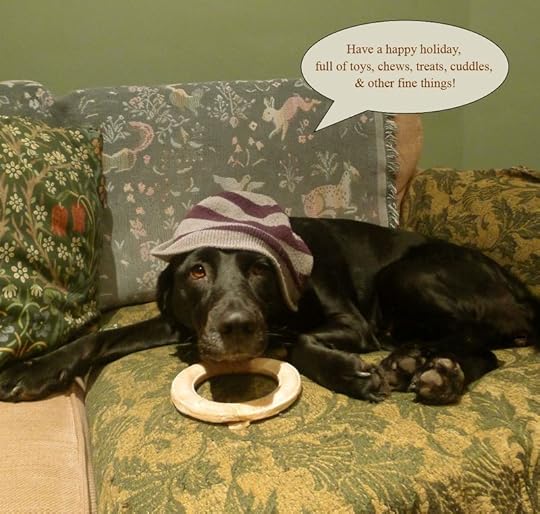 The paintings above are by Arthur Rackham (1867-1939). I recommend a related article by Derek Johnstone, published in The Conversation: "Why Ghosts Haunt England at Christmas But Steer Clear of America." Also, don't miss "Father Christmas: A New Tale of the North," a perfectly magical story by Charles Vess.
The paintings above are by Arthur Rackham (1867-1939). I recommend a related article by Derek Johnstone, published in The Conversation: "Why Ghosts Haunt England at Christmas But Steer Clear of America." Also, don't miss "Father Christmas: A New Tale of the North," a perfectly magical story by Charles Vess.
December 21, 2014
Tunes for a Monday Morning
In honor of the winter holidays, we start with three songs from A Midwinter Night's Dream (2008) by singer-songwriter, harpist, and music scholar Loreena McKennitt, from Ontario, Canada. McKennitt has spent many years exploring the history of Celtic music from its ancient roots along the Silk Road to western Europe, the British Isles, and onto the New World. Her own work draws on the musical traditions of countries all along the way.
In the videos above and directly below, she records the vocal tracks for two of the pieces on the album over music tracks already laid down by McKennitt and her band. The first is a traditional French song, "Noël Nouvelet" (late 15th century); the second is an English folk carol, "The Seven Rejoices of Mary" (collected in the 18th century).
Above: "Snow," another lovely song from A Midwinter's Night Dream, performed live in 2012. The lyrics are drawn from a poem by Archibald Lampman (the "Canadian Keats," 1961-1899), with music by McKennitt. Caroline Lavelle, a long-time member of McKennitt's touring band, is on cello.
Below: "Sweet Bells," a traditional carol from the north of England, performed by Yorkshire singer-songwriter Kate Rusby, with her husband Damien O'Kane on guitar. Rusby has recorded two fine albums of folk carols: Sweet Bells (2008) and While Mortals Sleep (2011).
Here in England's West Country, too, the "sweet ringing" of the village church bells on Christmas is a lovely thing, even for a dyed-in-the-wool pagan like me. But then, so many Christmas customs are rooted in those of pagan solstice celebrations that we can fairly share the holiday.

Paintings above: "Christmas Morning," "Sled Pulled by Yule Goats," "Brita" (one of Larsson's daughters), "Christmas Feast," and "Decorating the Tree" by Carl Larsson (Swedish, 1854-1919)
December 20, 2014
Happy Winter Solstice
"Modern Lights, Ancient Flames: Avebury Flames Spirals" by Tucson photographer Stu Jenks, taken when he visited us in England last year.
Wandering through Middle Earth...
"Pay heed to the tales of old wives. It may well be that they alone keep in memory what it was once needful for the wise to know." - J.R.R. Tolkien (The Lord of the Rings)
Terri Windling's Blog
- Terri Windling's profile
- 708 followers


